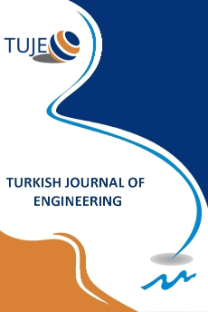APPLICATION OF HOMOTOPY PERTURBATION METHOD TO HEAT TRANSFER IN NANOFLUIDS
___
- Ayati, Z. and Biazar, J. (2015). “On the Convergence of the Homotopy Perturbation Method.” Journal of the Egyptian Mathematical Society, Issue 23. pp. 424-428
- Do, k. h. and Jang S. (2010). “Effect of nanofluids on the thermal performance of a flat micro heat pipe with a rectangular grooved wick.” International Journal of Heat and Mass Transfer, 53 , pp 2183 – 2192
- Hamad M.A.A. (2011). “Analytical solution of natural convection flow of a nanofluid over a linearly stretching sheet in the presence of magnetic field.” International Communications in Heat and Mass Transfer, Vol. 38, Issue 4, pp 487 – 492.
- Oahimire J.I, Bazuaye F.E and Harry T. H ((2016). “Numerical method for the analysis of thermal radiation on heat transfer in nanofluid.” Journal of Nanoscience and Technology, Vol.3, Issue 1, pp 1-4
- Uddin M.J., Kahn W. A., and Ismail A.I. (2012) “MHD Free Convective Boundary Layer flow of a Nanofluid past a Flat Vertical Plate with Newtonian Heating Boundary condition.” PLoS ONE 7(11): e49499 doi:10.1371/journal.pone.49499
- Wang X., Xu X. and Choi S.U.S. (1999). “Thermal conductivity of nanoparticle - fluid mixture.” Journal of Thermophysics and Heat Transfer, Vol. 13, No. 4, pp 474 – 80.
- ISSN: 2587-1366
- Yayın Aralığı: 4
- Başlangıç: 2017
- Yayıncı: Mersin Uüniversitesi
HÜSEYİN MUTLU, Burak Emre YAPANMIŞ, Alper GÜNÖZ
Nihan Aydın ERTUĞRUL, Zübeyde Hatipoğlu BAĞCI, Özgür Lütfi ERTUĞRUL
AQUIFER THERMAL ENERGY STORAGE SYSTEMS: BASIC CONCEPTS AND GENERAL DESIGN METHODS
Nihan Aydın Ertuğrul, Zübeyde Hatipoğlu Bağcı, Özgür Lütfi Ertuğrul
EXPERIMENTAL INVESTIGATION OF FLOW STRUCTURE DOWNSTREAM OF PERMEABLE CYLINDERS
Hüseyin Akıllı, Bengi Gözmen Şanlı
APPLICATION OF HOMOTOPY PERTURBATION METHOD TO HEAT TRANSFER IN NANOFLUIDS
Jonathan Oahimire, Olusegun Adeokun
